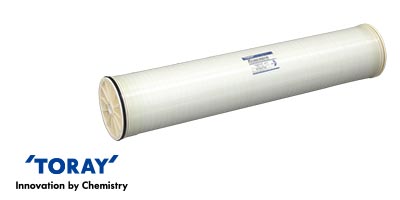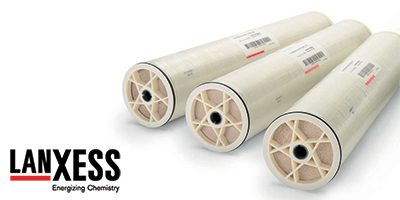Water Treatment & Reverse Osmosis Membranes
The use of reverse osmosis membranes in the water treatment industry is standardized practice, due to the requirement of filtration to take place in removing unwanted impurities from water. Membrane water treatment is done through the use of barriers that allow only specific substances to pass through the small pores of the membrane while not allowing other types of contaminants. There are a variety of membranes in use throughout the market which act as processes in treating groundwater, surface water, and wastewater to a level that is acceptable for industries and especially consumption. It is a rapidly growing industry, as a result of the need to combat low quality water sources such as rivers, lakes, wells, streams, and the ocean, in order to provide more alternative methods in supplying healthy, safe, steady, and accessible water to the masses.
As per mentioned, there are different types of membranes which can be utilized for water treatment. The factors that necessitate which membrane would be more effective relies upon the types of contaminants existing in the water, and the desired water quality by the user.
The two most common type of membranes used in the industry are:
- Membrane Filtration (ultrafiltration, microfiltration) works by eliminating particles (mainly suspended solids) from water through operating under pressure.
- Reverse Osmosis/Nanofiltration Membranes that operates similarly in producing freshwater from the prevention of larger dissolved molecules from passing through the small pores of the permeable membrane, while allowing the pure water to flow through.
HYDRANAUTICS MEMBRANES
- Brackish & Tap Water
- Seawater
- Nanofiltration
- Ultrafiltration Modules
- Specialty Membranes
- 2.5", 4", & 8"
TORAY MEMBRANES
- Tap & Brackish RO
- Seawater RO
- Toray Ultrafiltration
- Toray Specialty RO
LANXESS MEMBRANES
- 4" & 8" Available
- High Rejection
- Fouling Resistant
- Ultra Low Pressure
- High Flow
- Low Energy
Pure Aqua is a proud supplier of high quality membranes from top-rated reverse osmosis membrane manufacturing brands such as Dupont/Dow Filmtec, Hydranautics, Toray, Lanxess, and Koch. These membranes come in sizes ranging from 2", 4", and 8" for brackish water and seawater applications. They offer important features necessary for efficient performance, including low pressure and high rejection.
Membrane Elements: Reverse Osmosis (RO), Nanofiltration (NF), Ultrafiltration (UF)

-
Systems
-
Parts
-
Expertise
- All Expertise
- Engineered Solutions
-
Water Treatment Applications
- Hydrogen Production
- Poultry
- Solar Panels
- Agriculture
- Desalination
- Golf Courses
- Lithium Mining
- Water Stores
- Window Washing
- Aerospace
- Boiler Feed
- Dairy
- Disaster Relief
- Drinking Water
- Environmental
- Fish Hatcheries
- Food & Beverage
- Hospital
- Hotel
- Ice Making
- Laundry
- Marine
- Military
- Mining
- Municipal
- Offshore
- Pharmaceutical
- Power & Energy
- Refinery
- Restaurants
- Semiconductor
- Spot Free
- Wastewater
- Water Treatment Projects
- Regional Expertise
-
Resources
-
About Us
 ENGLISH arrow_drop_down
ENGLISH arrow_drop_down
 ESPAÑOL
ESPAÑOL ???????
??????? PORTUGUÉS
PORTUGUÉS FRANÇAIS
FRANÇAIS



